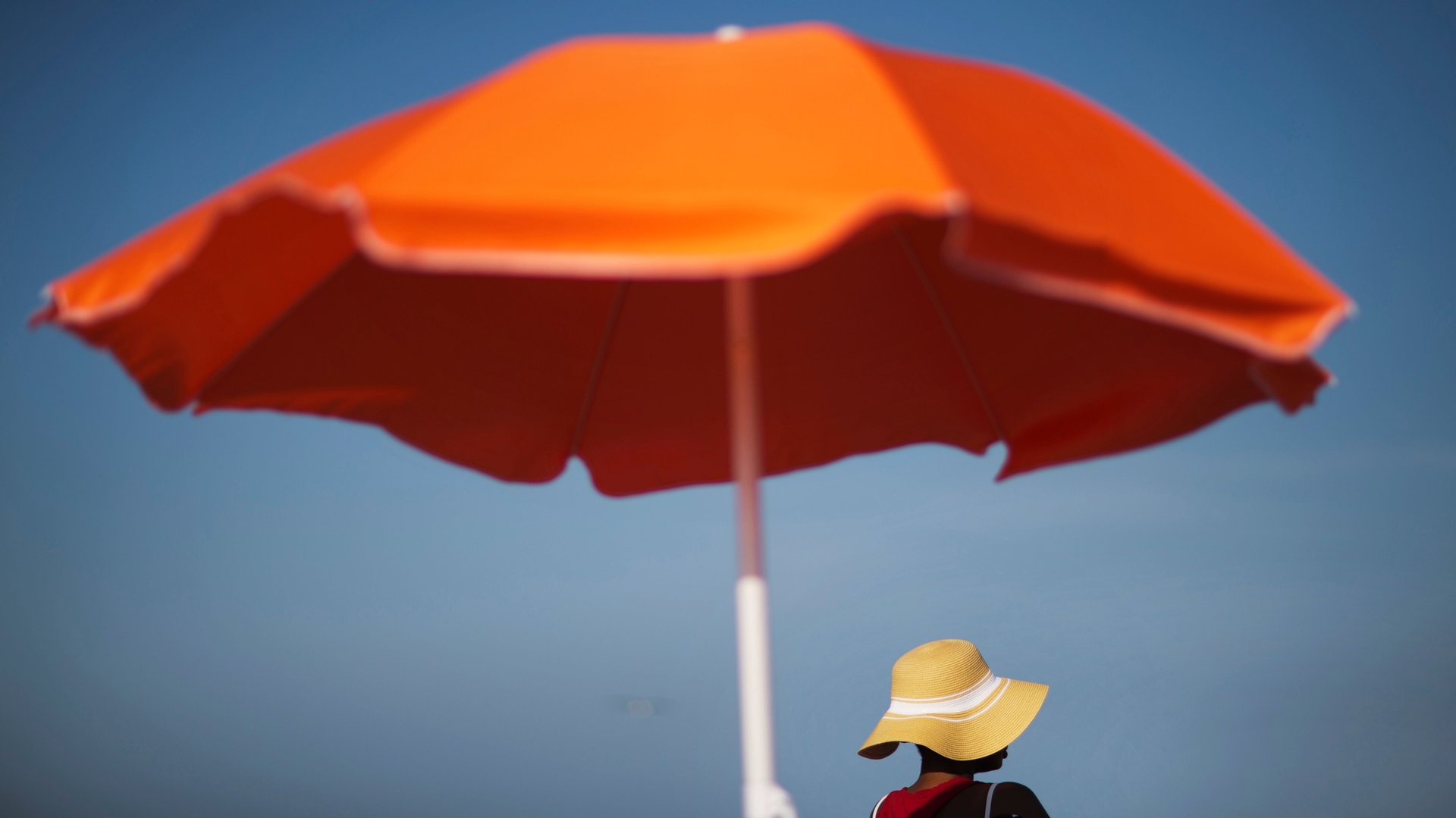People still aren’t wearing sunscreen and melanoma rates are rising
The prevalence of melanoma, the deadliest form of skin cancer, is growing in the US.


The prevalence of melanoma, the deadliest form of skin cancer, is growing in the US.
The trend is a bit perplexing. Scientists have a thorough understanding of how ultraviolet radiation from the sun damages the skin and acts as a carcinogen—and, more importantly, we have an affordable, easy-to-obtain solution. Modern sunscreens that protect against both ultraviolet-A (longer UV rays that cause the skin to produce more melanin, aging the cells in the process) and ultraviolet-B (shorter UV rays that primarily cause genetic damage to skin cells) rays has been around since the 1970s (paywall). We have the knowledge and means to protect ourselves from the sun—so why are rates of melanoma still going up in the US?
Simply, we’re not protecting ourselves from the sun nearly as much as we should be. Sun protection can be cumbersome; wearing hats, long sleeves, and pants in the summer can be uncomfortably warm and in some cases—like while swimming—pretty much impossible. That means skin will be exposed, and that skin needs to be protected by sunscreen, which can be goopy, smelly, or oily. There are mineral-based sunscreens (usually zinc oxide or titanium oxide) that offer a high-amount of protection from UV rays with a more comfortable texture. However, there’s a cosmetic trade off: they’re bright white and don’t rub in very easily.
There hasn’t been a new chemical that protects skin from the sun in about 20 years, largely because the US Food and Drug Administration has made it extremely difficult for manufacturers to navigate their regulations for over-the-counter medications. In 2014, the agency rejected eight compounds seeking approval. There are two currently awaiting a decision, one made by L’Oreal and another made by German company called BASF.
In the European Union, sunscreens are considered cosmetics, which receive less stringent regulations. As a result, there are many more options for broad-spectrum sunscreens in Europe than are available in the US. (That number is also about to shrink in some parts of the country; Hawaii recently banned two common sunscreen ingredients because research showed they were damaging coral reefs.)
So instead, companies are focusing on new methods of delivery for already-approved substances. Specifically, they’ve been taking the thick, white mineral sunscreens and breaking them down into tiny nanoparticles that would spread more evenly over the skin, creating a thin layer of UV protection. “That would allow the zinc oxide or titanium to be used incorporated into cosmetically elegant sunscreen,” says Henry Lim, a Detroit, Michigan-based dermatologist. These are generally recognized as safe (paywall), and are already on the market.
Even with advanced sunscreen, truly protecting ourselves from the sun’s rays is a lot of work. According to the American Academy of Dermatology, most people should be using about an ounce of sunscreen to cover their entire bodies (smaller amounts if only parts of their skin are exposed) every day. This sunscreen should protect from both UVA and UVB rays, and should have a rating of at least 30 for its sun protection factor (or spf), and should be reapplied every couple of hours if you get wet or sweaty. In addition, you need to wait 15 minutes or so for sunscreen to dry after applying before they work at full power. Effective skin maintenance requires a lot of vigilance and planning—it takes the spontaneity out of running out to meet a friend or to jump in the ocean. And even when people do apply sunscreen, they usually don’t even put on enough (paywall).
Although skin cancer rates are lower in people with darker skin, having more melanin alone doesn’t count as being protected from the sun’s rays. By some estimates, people with the darkest complexions have a natural spf of about 13.4 (pdf, p. 5), compared to light skin, which has a factor of only 3.4. Although dark skin won’t burn like lighter skin, the DNA in skin cells can still be damaged by the sun’s UV rays. Death rates from melanoma are also higher in people of color (paywall), often because cancerous lesions go unnoticed.
Globally, North America is the region with the second-highest instance of melanoma, trailing just Australia and New Zealand—though by a very significant margin.
That’s largely because these two countries are the human-inhabited region closest to hole in our atmosphere’s ozone layer (created in part by human activity, particularly the production of chlorofluorocarbons) near Antarctica. Floating about 19 miles above us, the ozone layer filters out a lot of the UVC rays from the sun, which are even shorter—and therefore more damaging—than UVB rays. Sunscreens don’t typically protect for UVC radiation because the assumption is that most of these rays will never reach us.
“People don’t quite appreciate the effect of UV on the skin,” says Lim. If caught in the earliest stage, melanoma has a survival rate of about 97%. However, the cancer spreads quickly, and by the time it reaches other organs, it’s much harder to treat. That’s why it’s always a good idea to get any unfamiliar mole examined by a healthcare professional as soon as possible.